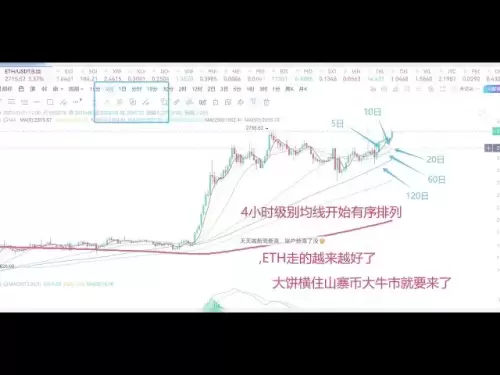-
 Bitcoin
Bitcoin $108,266.3477
-2.87% -
 Ethereum
Ethereum $2,549.8246
-3.89% -
 Tether USDt
Tether USDt $1.0000
0.00% -
 XRP
XRP $2.3487
-3.32% -
 BNB
BNB $665.2643
-3.19% -
 Solana
Solana $176.7790
-0.97% -
 USDC
USDC $0.9999
0.00% -
 Dogecoin
Dogecoin $0.2324
-3.86% -
 Cardano
Cardano $0.7732
-3.95% -
 TRON
TRON $0.2660
-4.25% -
 Sui
Sui $3.6204
-7.49% -
 Hyperliquid
Hyperliquid $35.0199
13.60% -
 Chainlink
Chainlink $16.0997
-2.54% -
 Avalanche
Avalanche $24.2495
-3.90% -
 Stellar
Stellar $0.2898
-3.58% -
 Shiba Inu
Shiba Inu $0.0...01473
-3.81% -
 Bitcoin Cash
Bitcoin Cash $432.4606
-0.07% -
 Hedera
Hedera $0.1965
-3.38% -
 UNUS SED LEO
UNUS SED LEO $8.7872
-1.15% -
 Toncoin
Toncoin $3.0221
-4.92% -
 Polkadot
Polkadot $4.6877
-4.40% -
 Litecoin
Litecoin $97.4331
-1.49% -
 Monero
Monero $391.9178
-3.09% -
 Bitget Token
Bitget Token $5.5514
5.18% -
 Pepe
Pepe $0.0...01461
0.19% -
 Pi
Pi $0.7589
-8.85% -
 Dai
Dai $0.9999
0.02% -
 Ethena USDe
Ethena USDe $1.0002
0.01% -
 Bittensor
Bittensor $445.4724
-5.16% -
 Uniswap
Uniswap $6.0922
-5.34%
Will RSI rebound after being oversold at a low level? How to confirm the buying opportunity?
When RSI falls below 30, indicating an oversold state, traders should confirm buying opportunities by monitoring bullish divergence, volume spikes, and support levels.
May 23, 2025 at 10:49 am
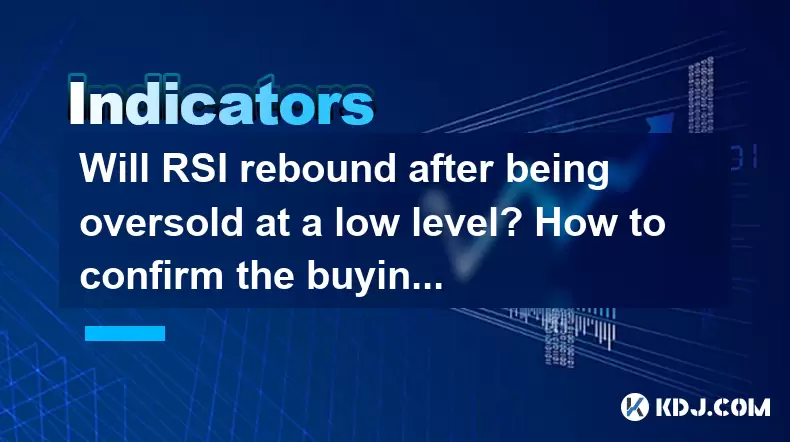
Will RSI rebound after being oversold at a low level? How to confirm the buying opportunity?
The Relative Strength Index (RSI) is a momentum oscillator used in technical analysis to measure the speed and change of price movements. It is particularly useful in identifying overbought and oversold conditions in the market. When the RSI falls to a low level and enters an oversold state, it often prompts traders to consider whether a rebound is imminent. This article will explore the likelihood of an RSI rebound after being oversold and provide detailed guidance on confirming buying opportunities.
Understanding RSI and Oversold Conditions
The RSI is typically calculated over a 14-day period and ranges from 0 to 100. An RSI value below 30 is generally considered to indicate an oversold condition, suggesting that the asset may be undervalued and due for a price increase. Conversely, an RSI above 70 suggests an overbought condition, hinting at potential price declines.
When an asset's RSI falls into the oversold territory, it does not guarantee an immediate rebound. Market sentiment, broader economic conditions, and other technical indicators can influence whether the RSI will indeed recover. However, the oversold condition does signal a potential buying opportunity for traders who believe the asset is undervalued.
Factors Influencing RSI Rebound
Several factors can influence whether an RSI will rebound after reaching an oversold state:
- Market Sentiment: Positive news or sentiment can drive a rebound. If the broader market is bullish, an oversold RSI might quickly recover.
- Volume: A spike in trading volume can indicate strong buying interest, increasing the likelihood of a rebound.
- Support Levels: If the price is near a significant support level, it may act as a catalyst for a rebound.
- Other Technical Indicators: Indicators like moving averages, MACD, and Bollinger Bands can provide additional confirmation of a potential rebound.
Confirming a Buying Opportunity
To confirm a buying opportunity after the RSI enters an oversold state, traders should consider the following steps:
- Monitor RSI Divergence: Look for bullish divergence, where the price makes a lower low, but the RSI makes a higher low. This can be a strong indication of an upcoming rebound.
- Check Volume: Ensure there is an increase in trading volume as the RSI approaches the oversold level. Higher volume can validate the buying interest.
- Analyze Support Levels: Confirm that the price is near a significant support level. Historical data can help identify these levels.
- Use Additional Indicators: Combine RSI with other technical indicators to increase the reliability of the signal. For example, if the price crosses above a moving average while the RSI is oversold, it can be a strong buy signal.
Practical Example of Confirming a Buying Opportunity
Let's walk through a practical example of how to confirm a buying opportunity after the RSI enters an oversold state:
- Identify the Oversold RSI: Suppose the RSI of a cryptocurrency falls below 30, indicating an oversold condition.
- Check for Bullish Divergence: Look at the recent price action and RSI. If the price made a lower low, but the RSI made a higher low, this is a bullish divergence and a potential buying signal.
- Analyze Volume: Check if the trading volume increased as the RSI approached the oversold level. Higher volume can confirm the buying interest.
- Identify Support Levels: Use historical data to identify any significant support levels near the current price. If the price is near a known support level, it increases the likelihood of a rebound.
- Confirm with Other Indicators: Look at other indicators like the 50-day moving average. If the price crosses above this moving average while the RSI is oversold, it provides additional confirmation of a buying opportunity.
Trading Strategy Based on Oversold RSI
Developing a trading strategy based on an oversold RSI involves combining the RSI with other technical analysis tools. Here is a step-by-step approach:
- Identify the Oversold RSI: Wait for the RSI to fall below 30.
- Confirm Bullish Divergence: Look for a higher low in the RSI compared to the price.
- Check Volume: Ensure there is an increase in trading volume.
- Verify Support Levels: Confirm the price is near a significant support level.
- Use Additional Indicators: Look for confirmation from other indicators like moving averages.
- Execute the Trade: Once all conditions are met, enter a long position.
- Set Stop-Loss and Take-Profit Levels: To manage risk, set a stop-loss below the recent low and a take-profit at a reasonable resistance level.
Common Mistakes to Avoid
When using the RSI to confirm buying opportunities, traders should be aware of common pitfalls:
- Ignoring Other Indicators: Relying solely on the RSI without considering other technical indicators can lead to false signals.
- Overtrading: Entering too many trades based on oversold RSI conditions without proper confirmation can result in losses.
- Neglecting Market Context: Failing to consider broader market conditions and sentiment can lead to misjudging the likelihood of a rebound.
Frequently Asked Questions
Q: Can an RSI remain oversold for an extended period without rebounding?
A: Yes, an RSI can remain oversold for an extended period if the market sentiment remains bearish or if there are no significant catalysts to drive a rebound. It's important to consider other factors like volume, support levels, and broader market conditions.
Q: How can I differentiate between a genuine buying opportunity and a false signal when the RSI is oversold?
A: To differentiate between a genuine buying opportunity and a false signal, use multiple technical indicators for confirmation. Look for bullish divergence, increased volume, proximity to support levels, and confirmation from other indicators like moving averages.
Q: Is it possible for the RSI to give false signals even when all other conditions are met?
A: Yes, even when all conditions are met, the RSI can give false signals. No single indicator is foolproof, and it's crucial to use a combination of technical analysis tools and consider the broader market context to increase the reliability of trading signals.
Q: How often should I check the RSI to confirm a buying opportunity?
A: The frequency of checking the RSI depends on your trading style. For short-term traders, checking the RSI multiple times a day may be necessary. For longer-term investors, daily or weekly checks may suffice. Always ensure you're looking at the RSI in conjunction with other indicators and market conditions.
Disclaimer:info@kdj.com
The information provided is not trading advice. kdj.com does not assume any responsibility for any investments made based on the information provided in this article. Cryptocurrencies are highly volatile and it is highly recommended that you invest with caution after thorough research!
If you believe that the content used on this website infringes your copyright, please contact us immediately (info@kdj.com) and we will delete it promptly.
- Bitcoin Surges Past $111,000, Opening the Hunt for the Next Top Meme Coin of 2025
- 2025-05-23 21:00:13
- Bitcoin (BTC) price breaks out to hit a new all-time high of $111,970.17, setting a Bitcoin Pizza Day record
- 2025-05-23 21:00:13
- Bitcoin Solaris (BTC-S) Emerges as One of 2025's Most Compelling Blockchain Opportunities
- 2025-05-23 20:55:13
- Bitcoin Solaris (BTC-S) Emerges as a Leading Blockchain Opportunity in the New Phase of Market Innovation
- 2025-05-23 20:55:13
- Strategy's stock price has performed better than Bitcoin in 2025
- 2025-05-23 20:50:13
- Justin Sun Calls Trump's Pro-Crypto Stance 'Game-Changing,' Defends Memecoins as Legitimate Assets
- 2025-05-23 20:50:13
Related knowledge
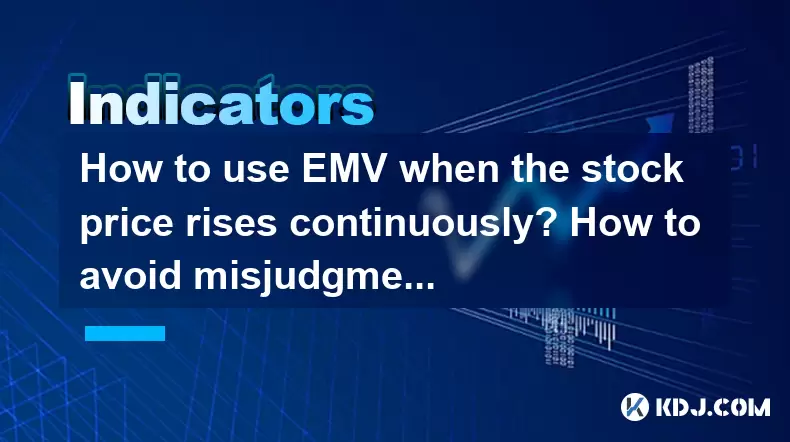
How to use EMV when the stock price rises continuously? How to avoid misjudgment in extreme market conditions?
May 23,2025 at 07:29pm
In the dynamic world of cryptocurrency trading, the Exponential Moving Average (EMA) is a powerful tool that traders use to make informed decisions, especially during periods of continuous stock price rises. Understanding how to effectively use EMAs and avoiding misjudgment in extreme market conditions are crucial skills for any crypto trader. This arti...
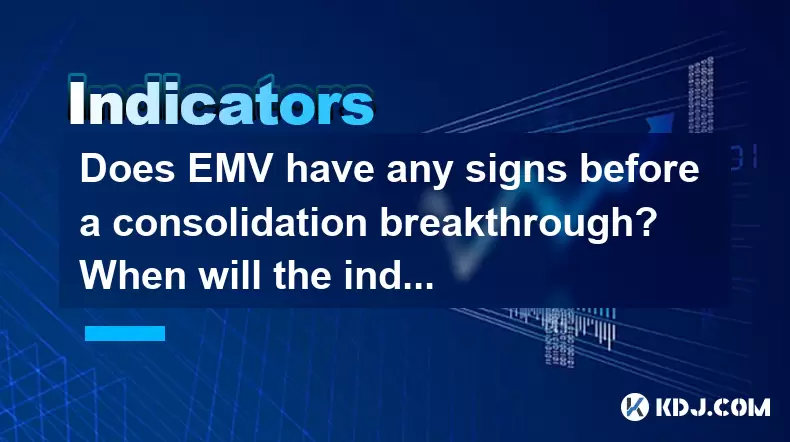
Does EMV have any signs before a consolidation breakthrough? When will the indicator give an early warning?
May 23,2025 at 06:42pm
Does EMV have any signs before a consolidation breakthrough? When will the indicator give an early warning? The Ease of Movement Value (EMV) is a technical indicator that helps traders understand the relationship between price and volume in the cryptocurrency market. It is particularly useful for identifying potential breakouts from consolidation period...
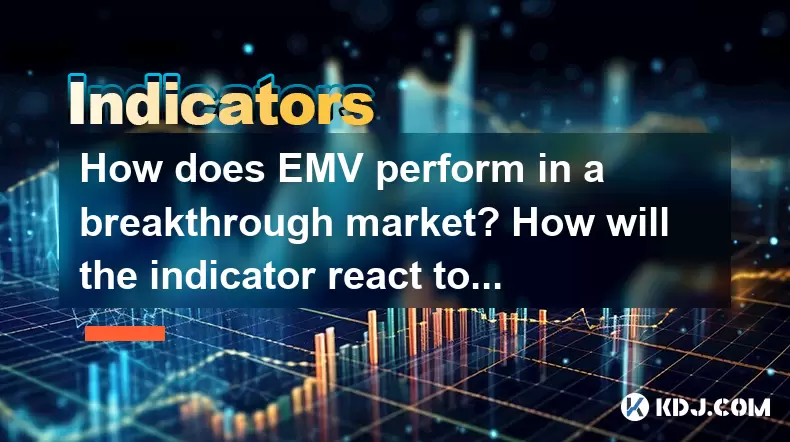
How does EMV perform in a breakthrough market? How will the indicator react to a false breakthrough?
May 23,2025 at 06:01pm
Introduction to EMV IndicatorThe Ease of Movement Value (EMV) indicator is a technical analysis tool that helps traders identify the relationship between price and volume in the cryptocurrency market. Developed by Richard W. Arms, Jr., the EMV indicator aims to measure the 'ease' with which prices move. In a breakthrough market, understanding how EMV pe...
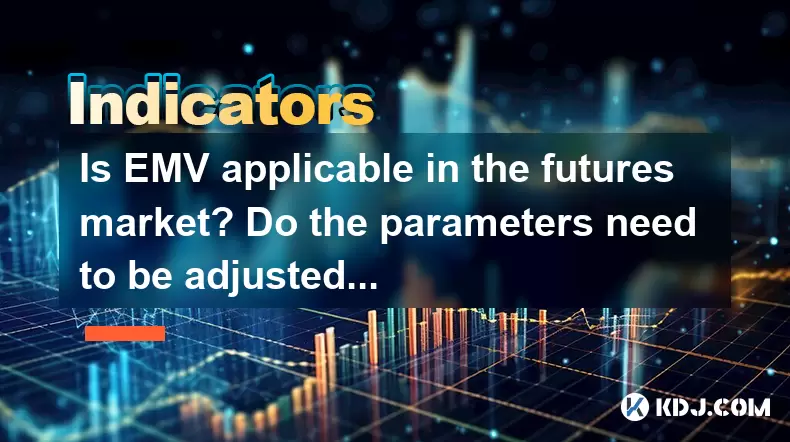
Is EMV applicable in the futures market? Do the parameters need to be adjusted in a leveraged environment?
May 23,2025 at 05:15pm
The application of Exponential Moving Average (EMV) in the futures market, particularly within a leveraged environment, is a topic that garners significant interest among traders. EMV, a type of moving average that places greater weight on recent price data, can be a useful tool for traders in the futures market. However, its effectiveness and the neces...
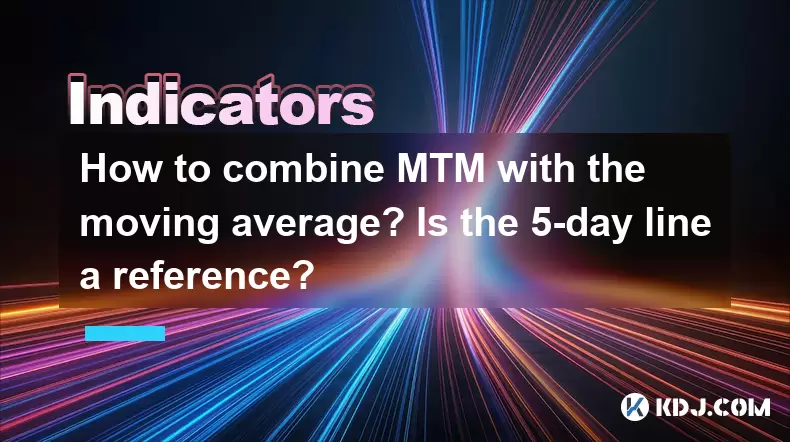
How to combine MTM with the moving average? Is the 5-day line a reference?
May 23,2025 at 03:35pm
Combining the Money Flow Index (MFI) with the moving average can provide a comprehensive approach to analyzing cryptocurrency market trends. The MFI, also known as the Money Flow Index, is a momentum indicator that measures the flow of money into and out of a security over a specified period. When combined with the moving average, traders can gain insig...
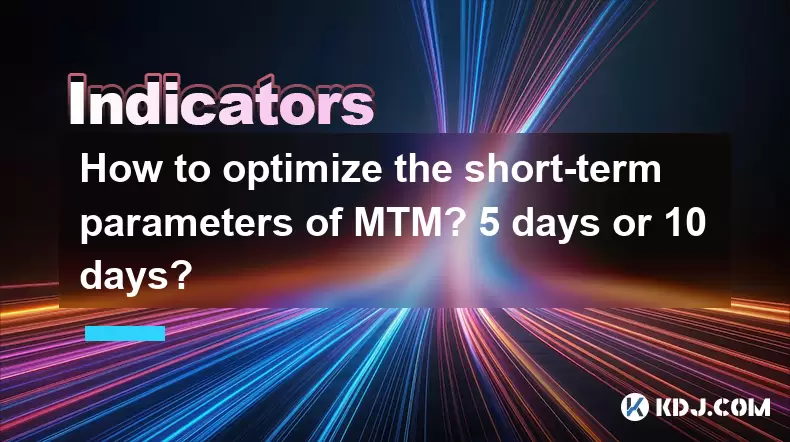
How to optimize the short-term parameters of MTM? 5 days or 10 days?
May 23,2025 at 08:07am
In the world of cryptocurrency trading, optimizing the short-term parameters of the Moving Time Model (MTM) is crucial for traders looking to maximize their profits. The MTM is a technical analysis tool that helps traders identify potential entry and exit points in the market by analyzing price movements over a specified period. The question of whether ...

How to use EMV when the stock price rises continuously? How to avoid misjudgment in extreme market conditions?
May 23,2025 at 07:29pm
In the dynamic world of cryptocurrency trading, the Exponential Moving Average (EMA) is a powerful tool that traders use to make informed decisions, especially during periods of continuous stock price rises. Understanding how to effectively use EMAs and avoiding misjudgment in extreme market conditions are crucial skills for any crypto trader. This arti...

Does EMV have any signs before a consolidation breakthrough? When will the indicator give an early warning?
May 23,2025 at 06:42pm
Does EMV have any signs before a consolidation breakthrough? When will the indicator give an early warning? The Ease of Movement Value (EMV) is a technical indicator that helps traders understand the relationship between price and volume in the cryptocurrency market. It is particularly useful for identifying potential breakouts from consolidation period...

How does EMV perform in a breakthrough market? How will the indicator react to a false breakthrough?
May 23,2025 at 06:01pm
Introduction to EMV IndicatorThe Ease of Movement Value (EMV) indicator is a technical analysis tool that helps traders identify the relationship between price and volume in the cryptocurrency market. Developed by Richard W. Arms, Jr., the EMV indicator aims to measure the 'ease' with which prices move. In a breakthrough market, understanding how EMV pe...

Is EMV applicable in the futures market? Do the parameters need to be adjusted in a leveraged environment?
May 23,2025 at 05:15pm
The application of Exponential Moving Average (EMV) in the futures market, particularly within a leveraged environment, is a topic that garners significant interest among traders. EMV, a type of moving average that places greater weight on recent price data, can be a useful tool for traders in the futures market. However, its effectiveness and the neces...

How to combine MTM with the moving average? Is the 5-day line a reference?
May 23,2025 at 03:35pm
Combining the Money Flow Index (MFI) with the moving average can provide a comprehensive approach to analyzing cryptocurrency market trends. The MFI, also known as the Money Flow Index, is a momentum indicator that measures the flow of money into and out of a security over a specified period. When combined with the moving average, traders can gain insig...

How to optimize the short-term parameters of MTM? 5 days or 10 days?
May 23,2025 at 08:07am
In the world of cryptocurrency trading, optimizing the short-term parameters of the Moving Time Model (MTM) is crucial for traders looking to maximize their profits. The MTM is a technical analysis tool that helps traders identify potential entry and exit points in the market by analyzing price movements over a specified period. The question of whether ...
See all articles

























